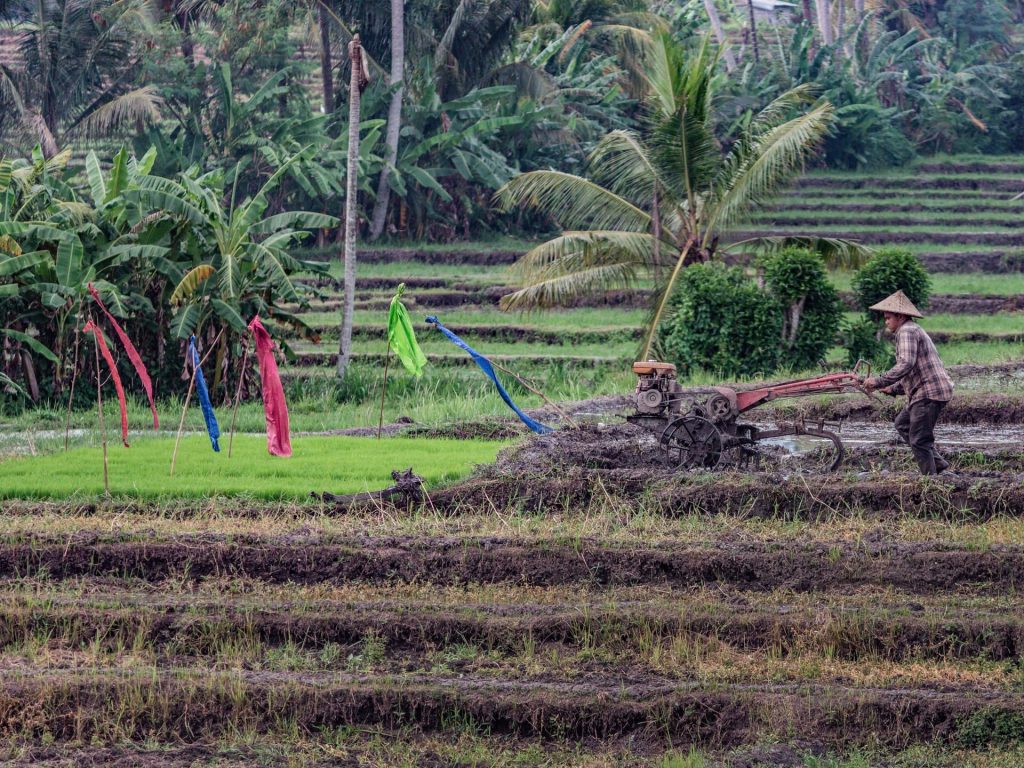
A farmer plows his fields in Western Bali, Indonesia. picture: Pan Species / Unsplash
How the world produces and consumes meals accounts for as a lot as a third of annual greenhouse gasoline emissions. on the identical time, local climate change is radically altering meals packages, with world penalties. one factor has to change, says Ryan Hobert, the UN basis’s Managing Director for vitality, local climate & the environment. on this Q&A, he suggests methods to make optimistic that what goes on our plates contributes to a extra healthful, extra resilient planet.
Q: in relation to local climate change, what retains you up at evening time?
Ryan Hobert: What I fear most about is that the impacts from local climate change are going to be method extra extreme than we anticipate. We’re already seeing more and more intense storms, droughts, and warmth waves, and utterly different people impacts will proceed to worsen as temperatures rise — which they are going to as a outcome of we don’t have local climate change under administration.
Then there are all of the points of the local climate disaster that we are likely to not think about. One factor that we haven’t centered on ample is the influence of local climate change on our meals. We’re going to ought to radically shift how we do agriculture, collectively with what we develop, the place we develop it, and the method we get it to market. Scientists anticipate principal decreases in agricultural productiveness on account of local climate change in areas like sub-Saharan Africa, which would possibly very properly be utterly devastating, particularly as populations there proceed to develop. after which there are the warmth and precipitation modifications. We’re already seeing this in California with plots left uncultivated in consequence of lack of water. Northern Kenya is without delay going by way of a coronary heart-wrenching drought that is devastating lives and livelihoods. Farmers are on the entrance traces, and poor farmers are going to face the brunt of these impacts, regardless of the exact confirmed actuality that they’ve contributed virtually nothing to the draw again. We’ll have one factor like 10 billion people on the planet by 2050 [compared with just under 8 billion now], so we’ll ought to feed extra people whereas drastically reducing our emissions and making our packages extra resilient. That’s an superb problem.
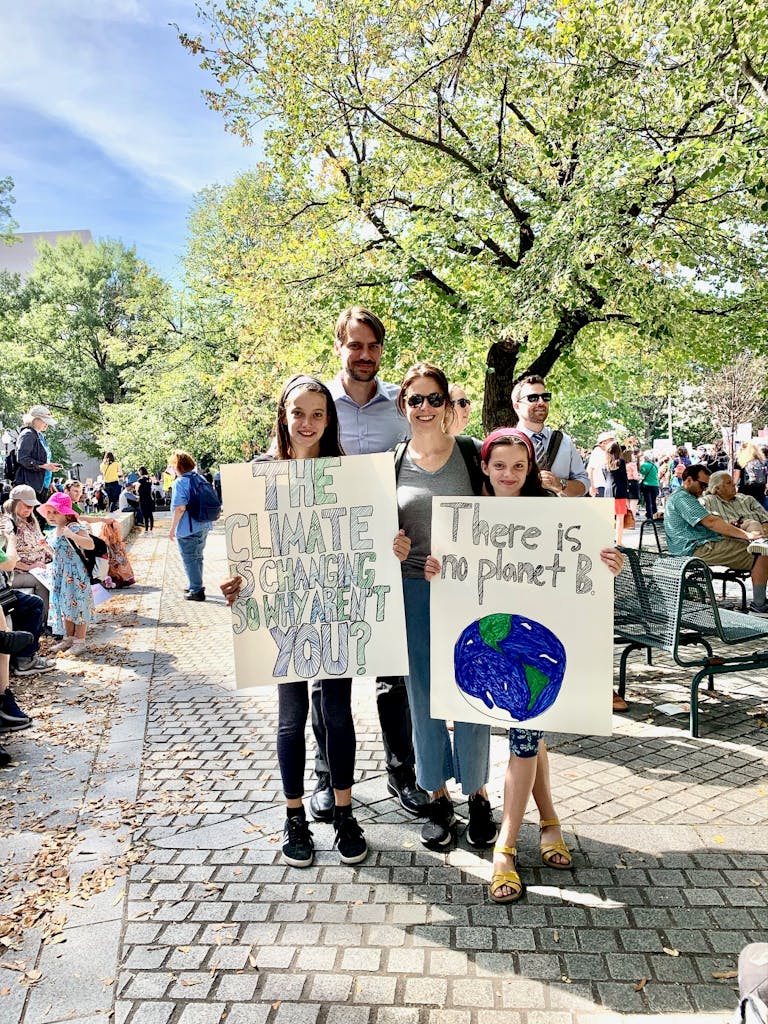
Ryan Hobert and his household at a local climate protest in Washington, DC. picture: Ryan Hobert / UN basis
the typical particular person doesn’t start being attentive to these factors till they see the modifications taking place of their yard. everyone factors to altering temperatures and will enhance in wildfires and floods. How do meals packages contribute to local climate change?
Some estimates, collectively with by the Intergovernmental Panel on local climate Change [IPCC], put meals system emissions — which embrace rising the meals, transportation, storage, promoting, consumption, and waste — at as a lot as one-third of whole world greenhouse gasoline emissions. we’d like meals packages which might be ready for the modifications which might be coming; after which, on the identical time, we have to enlist meals packages to assist us scale again emissions and produce that one-third decide down.
How we develop our meals, how we get it to market, how we cook dinner it, what we do with the waste — all of these issues have an superb affect on greenhouse gasoline emissions, and subsequently on our local climate.
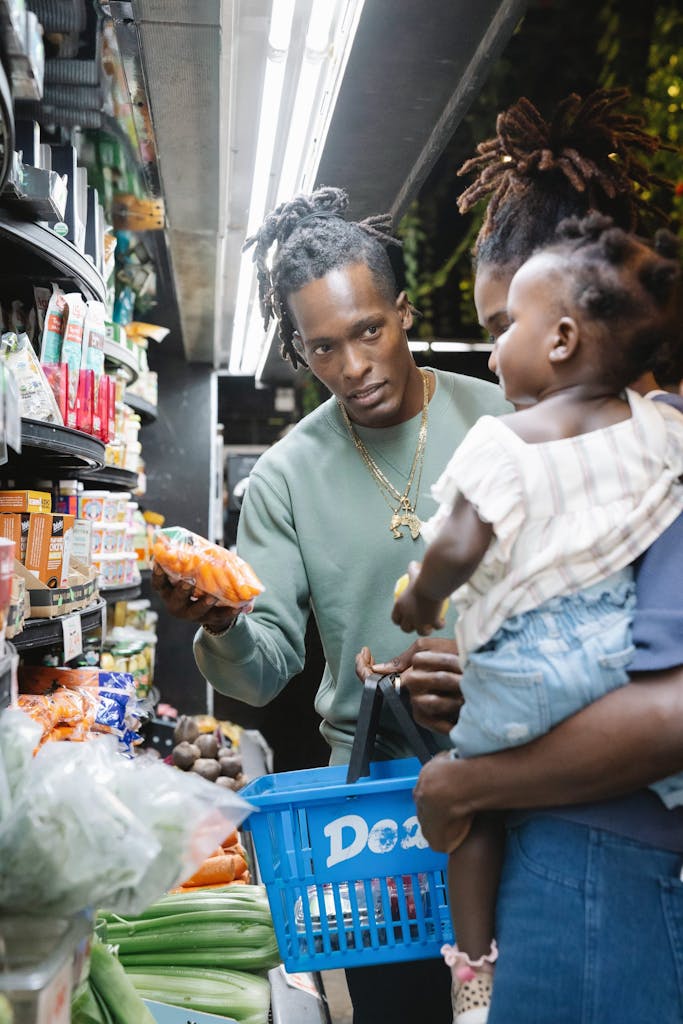
A household retailers for carrots in an American grocery retailer. picture: Greta Hoffman / Pexels
a pair of of these factors had been dropped at the fore on the current UN meals packages Summit that the UN basis supported behind the scenes. What are a pair of of the important factor takeaways from that gathering?
The Summit was distinctive in that it was the principal time the UN Secretary-widespread recognized as for a worldwide dialogue about meals: the best method it’s produced, distributed, and consumed, as properly as to its implications for human well being, the environment, gender equality, and livelihoods. The Summit’s largest accomplishment was to place meals on the radar in a method that it hasn’t been earlier than, as an intersectional concern that touches on all the pieces else.
i assume the Summit succeeded in getting meals factors squarely on the worldwide agenda, and that i assume that meals factors will proceed to develop in significance inside the years forward. We noticed that at COP26 [the UN’s Climate Change Conference] in November, the place the give consideration to meals elevated significantly from earlier years. The connection to local climate is one which i assume gives meals packages an added significance as quickly as we take into consideration alternatives to scale again emissions and construct resilience past vitality packages and infrastructure.
What are a pair of of the challenges you see to attaining progress on this house?
people have made massive modifications to the pure world so as to assemble a meals system that serves our wants. thought-about one of many statistics I discover actually fascinating is that ought to you’d possibly have a look in any respect the world’s mammals by the use of whole biomass, people make up 35% of that whole, livestock sixty three%, and wild animals 2%.
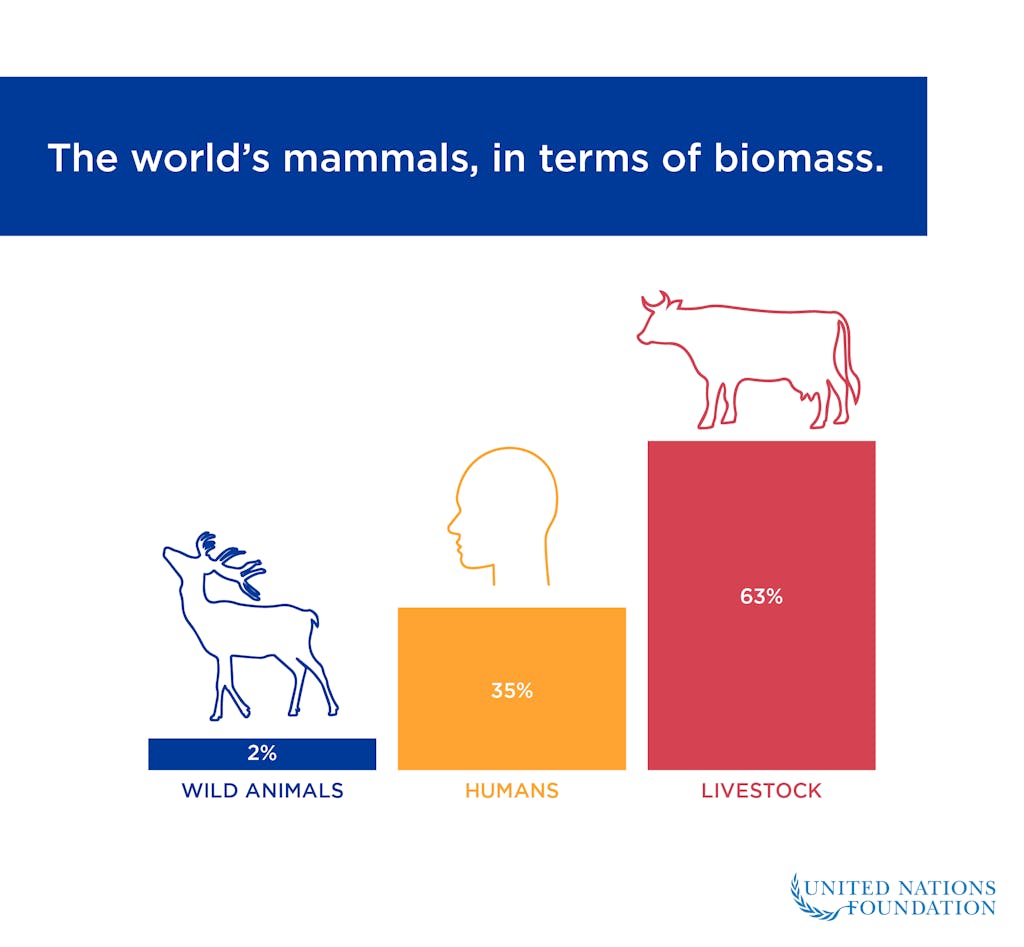
knowledge: Our World in knowledge, Graphic: UN basis
take into consideration that for a minute: almost two-thirds of the mammals on earth are there simply to feed people — and solely a tiny fraction are wild animals. We’ve actually pushed again how a lot nature is left, largely as a outcome of we minimize down forests to make method for agriculture and grazing, and we’ve domesticated the panorama to such an extent that we shouldn’t be shocked that there are penalties by the use of how properly our environment features. The problem — and the prospect — shall be to undo a pair of of the harm we’ve inflicted on our environment by constructing extra sustainable meals packages throughout the globe.
one other problem is solely the dearth of particulars with reference to the connection between local climate and meals. If we had a stronger sense of the interactions between the two, we’d method extra readily embrace options. One potential decision is capturing carbon in our soils, which is candy for local climate change and makes soils extra healthful and extra productive. we will seize this alternative by adopting practices that can incentivize farmers to protect and enhance soil fertility and carbon.
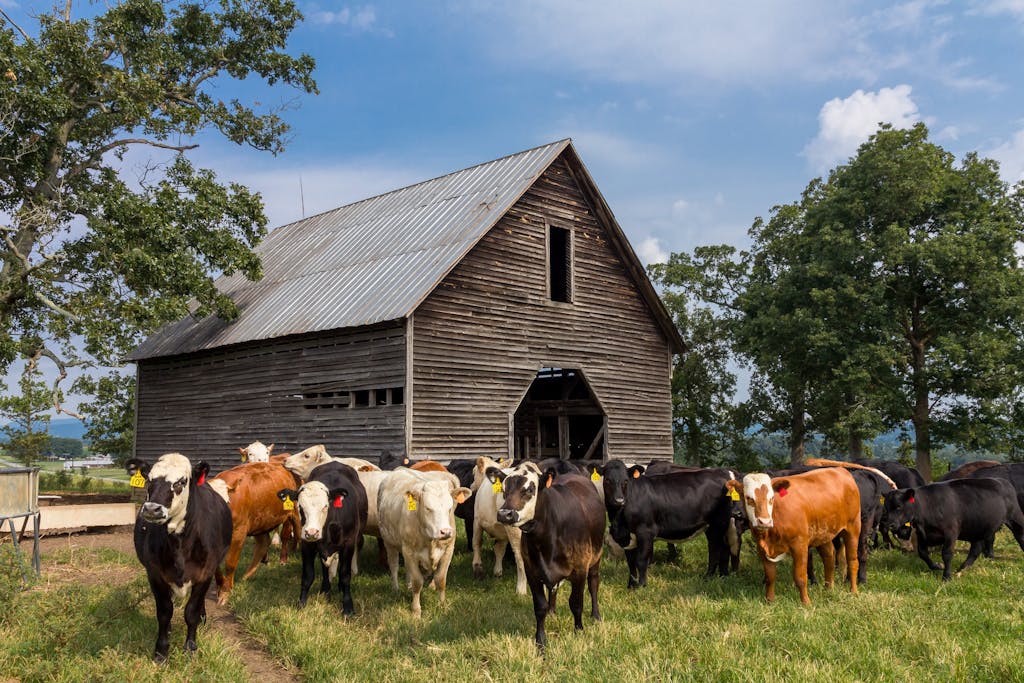
A herd of cattle at a farm in america. picture: Mark Stebnicki / Pexels
lastly, there’s the draw again of entrenched pursuits. the most important meals firms are massive multinational companies that naturally prioritize earnings and are immediately accountable to their shareholders. It’s very onerous, for event, to persuade a massive meatpacking agency that the world could be elevated off if people consumed method much less meat; very associated to coal, oil, and gasoline firms don’t want to hearken to that the world should part out using fossil fuels. As a society, i assume we have to demand that these firms additionally prioritize co-advantages, akin to reducing emissions, defending ecosystems, and conserving biodiversity. And in the end, enterprise-minded people ought to understand this since failing to protect the pure infrastructure that makes one factor like rising meals doable is an monumental market failure. That market failure ought to make politicians, businesspeople, and residents alike terribly involved. there might even be not a planet B, as youthful local climate protesters ceaselessly remind us.
What with reference to the position of the private sector and governments in altering meals packages? are you able to affirm with reference to the UN basis’s work in serving to provoke local climate movement from these actors?
Governments closely subsidize meals manufacturing and consumption, so thought-about one of many issues we’re doing is working with a coalition of governments, NGOs, and worldwide organizations to get the final public sector to decide to shifting the sort of assist they current to meals packages. that is so as that they’re not simply incentivizing meals manufacturing, however they’re additionally specializing in delivering utterly different co-advantages i talked about earlier, from local climate to range to ecosystem well being.
There’s additionally a important want for innovation in meals and agricultural packages. With a rising inhabitants that is consuming an rising quantity of animal protein and that has extra carbon-rich diets, greenhouse gasoline emissions are going to explode if we don’t develop and deploy revolutionary options to make meals packages extra resilient and fewer carbon-intensive. This raises important questions akin to: How do you make elevated seeds which might be extra resilient to local climate change? How do you use expertise inside the agricultural sphere to maximise effectivity and productiveness? How do you drastically minimize methane (a potent greenhouse gasoline) emissions from livestock? How do you make world and regional evaluation collaboratives extra revolutionary so as that they ship for the world’s poorest and for smallholder farmers?
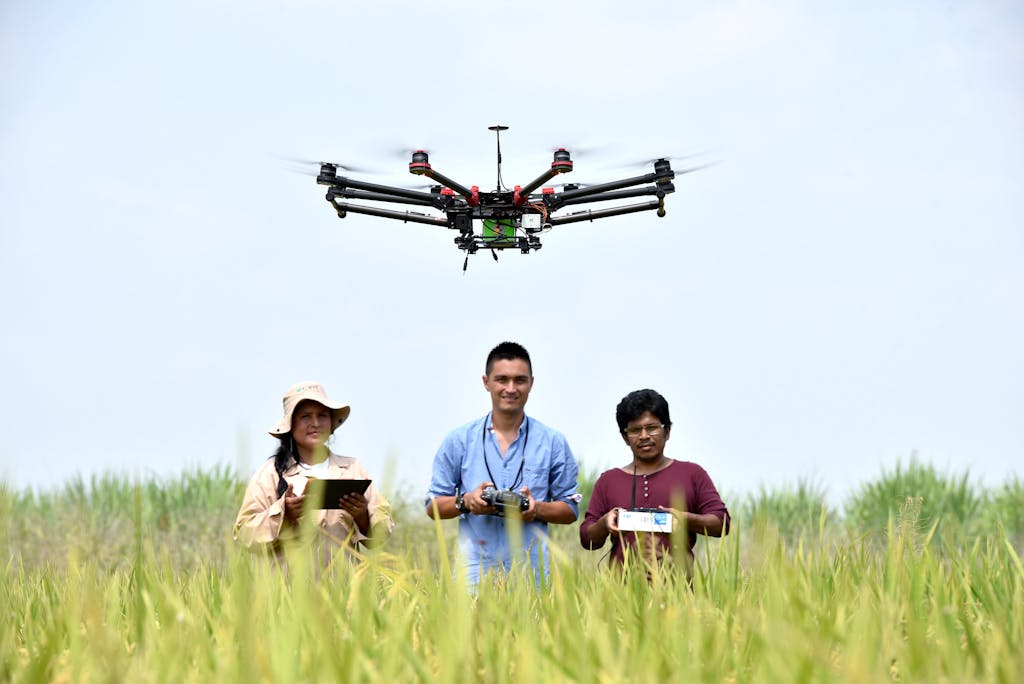
Researchers fly a drone over a rice area in Colombia. picture: Niel Palmer/ CIAT (worldwide center for Tropical Agriculture)
In that vein, the UN basis helps assist the Agriculture Innovation Mission for local climate (purpose for local climate) that the U.S. and the United Arab Emirates launched at COP26 in early November. This initiative is all about accelerating funding — starting with a $4 billion dedication — for innovation in agriculture to reinforce local climate outcomes. Our hope is that in supporting this work, we’ll see improvements throughout the meals system worth chain that shall be transformative each to deliver down emissions and to current the world’s poorest communities with extra appreciable and nutritious meals.
What can particular person prospects do to assist contribute to local climate-resilient meals packages?
the principal factor we will do is eat much less meat, particularly beef, and make it doable for the meat we do eat is raised sustainably. Like I mentioned, livestock represents 60-plus p.c of the mammal biomass on Earth, which is gigantic. If these animals are ruminants, they’re additionally emitting an limitless quantity of methane over the course of their life. which will want to change.
The second factor is tackling meals waste, which is accountable for as a lot as 10% of all world emissions. That’s as a outcome of as quickly as we waste meals, we’re losing all of the vitality and water that it took to develop, harvest, bundle, and transport it. after which, when it rots in a landfill, it emits methane — a greenhouse gasoline that is many instances stronger than carbon dioxide.
Educating individuals with reference to the connections between the meals we eat and the local climate disaster is important. we will all do our half!
TAKE movement
As humanity sits on the purpose of a local climate disaster, on a daily basis people are stepping up — discovering options and addressing the local climate disaster of their communities and nations.
Our local climate Is Our Future, a United Nations basis initiative, highlights the work of these unrelenting advocates and activists who’re on the frontlines of the battle to defend our planet.
Stand with them.

